Self-referential Strategy for Developing Mental Platform

This article is a section of Mental Platform: The Evolving Concept System.
I pay attention to two fields: Knowledge Engagement and Product Engagement. Both two fields share the same pattern of developing a concept system. However, they have different complexities in the stage of Continuous Objectification.
For a theorist, the Objectification of Concepts is very simple. He/she only needs to write a book! However, for a startup founder, the Objectification of Concepts is quite complicated because he/she needs to build a team and make a real product or a service.
On March 2, 2023, I edited a book (draft) titled Perspectives on Product Engagement (v1.0).
So I will use the field of Product Engagement as the context of Continuous Objectification. Based on this setting, I made a model called “Evolving Concept System”. See the diagram below.

I used “Spontaneous Concept System/Defined Concept System/Scientific Concept System” to explain three parts of an Evolving Concept System.
- Mental Platform: How do you think?
- Behavioral Network: How do you do?
- Material Container: What do you make?
It means the process of Developing A Concept System is not only about thinking, but also about doing, saying, and making.
Let’s start with “Mental Platform”:
- Theory as Platform: an established academic theory is a Scientific Concept System. A founder learns some ideas from a Scientific Concept System, or from many theories. In this stage, an academic theory is perceived as a developmental platform that supports his/her lifelong learning and cognitive development.
- Mental Platform: Finally, he/she curates ideas into a meaningful whole and develops his/her own Spontaneous Concept System about a particular possible product. Since his/her goal is to build a successful innovative product, the Spontaneous Concept System could be understood as a Mental Platform that supports his/her activities.
Developing A Concept System is an Activity.
In the stage of Continuous Objectification, the primary object is a Concept System while the primary activity is called Developing A Concept System.
Now, we can claim that Developing A Concept System is a Self-referential Activity.
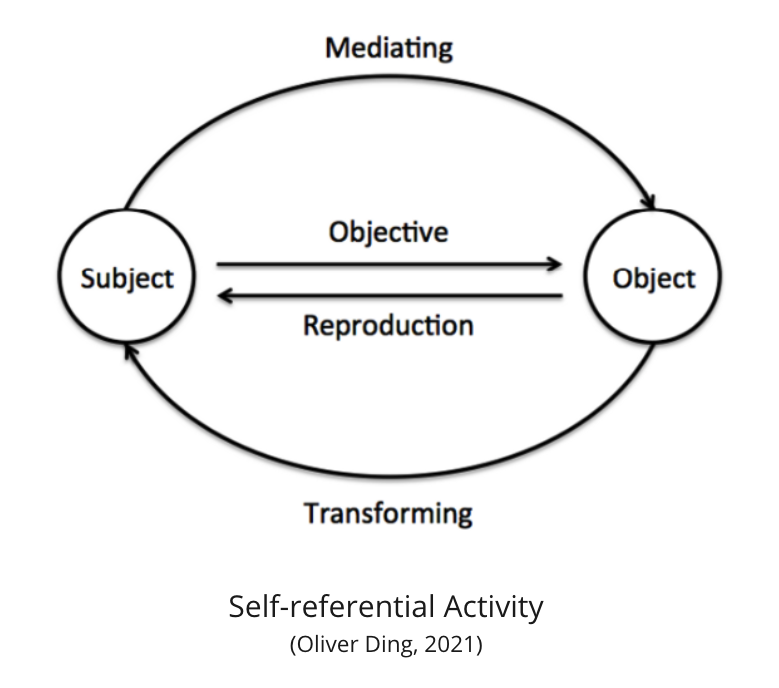
Self-referential Activity refers to a special type of activity that can support self-reference development. Traditional Activity Theory only considers three components — Subject, Mediating, and Object — as its basic model. I added the fourth component “Transforming” to indicate the Self-referential connection.
You can find more details in Self-referential Activity.
Based on the model of Self-referential Activity, I made a new model called Self-referential Strategy to develop Mental Platforms. See the diagram below.
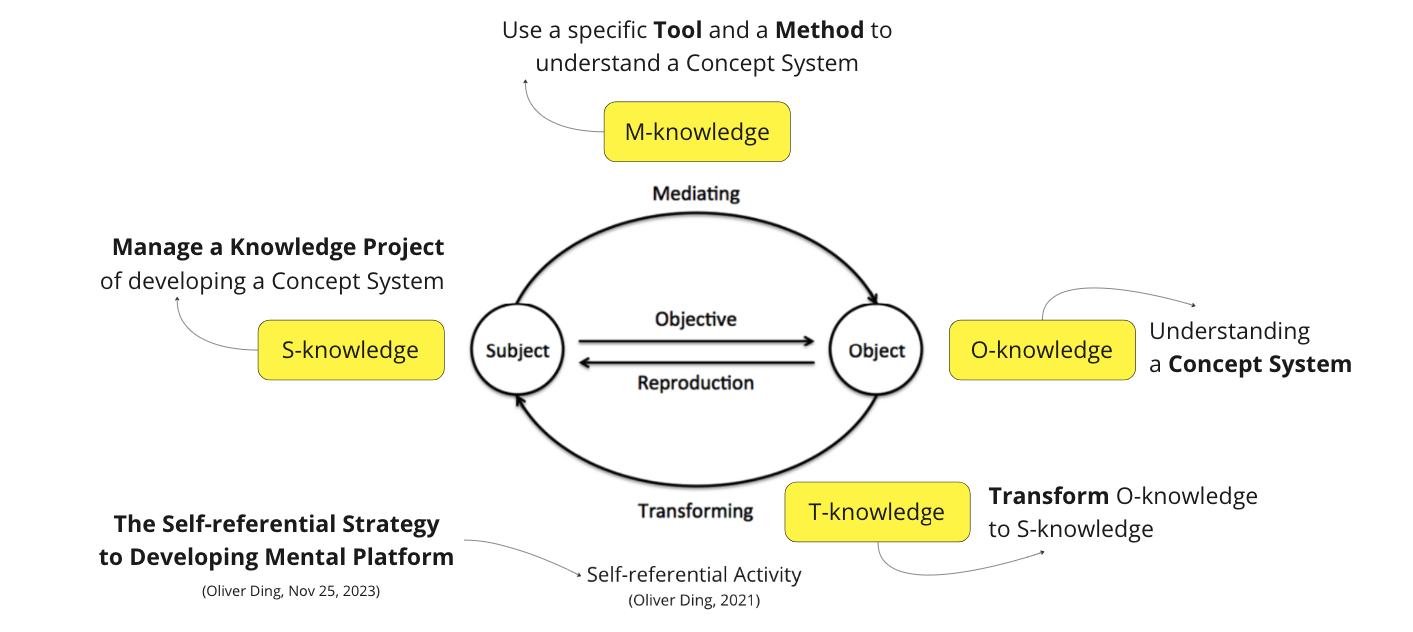
The above diagram defines four types of personal knowledge. If you care about note-taking, you can pay attention to the connection between this typology and concept systems.
- S-knowledge
- O-knowledge
- M-knowledge
- T-knowledge
S-knowledge
S-knowledge refers to knowledge for self-awareness, self-improvement, self-regulation, life discovery, life strategy, etc. For the present discussion, it refers to Manage a Knowledge Project of Developing A Concept System.
For example, the D.I.V.E. framework for managing knowledge projects in general. We can use it for S-knowledge.
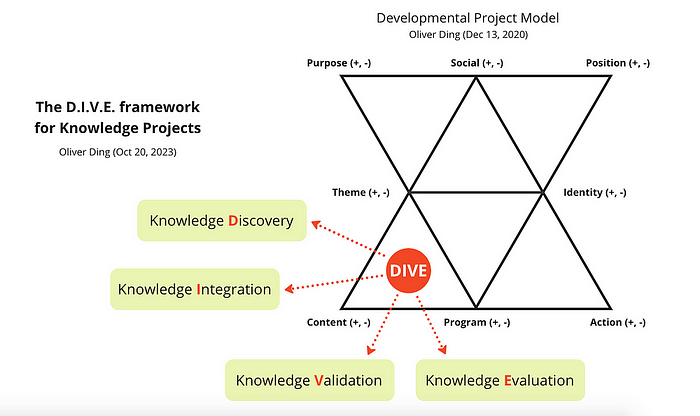
O-knowledge
O-knowledge refers to knowledge about the work’s object. For example, if the work is building a house, the O-knowledge is about how to build the house. For the present discussion, O-knowledge refers to understanding a Concept System.
Several days ago, I published an article about Robert Kegan’s knowledge enterprise. In 1994, Robert Kegan introduced the “Five Orders of Consciousness” framework in a book titled In Over Our Heads. See the diagram below.
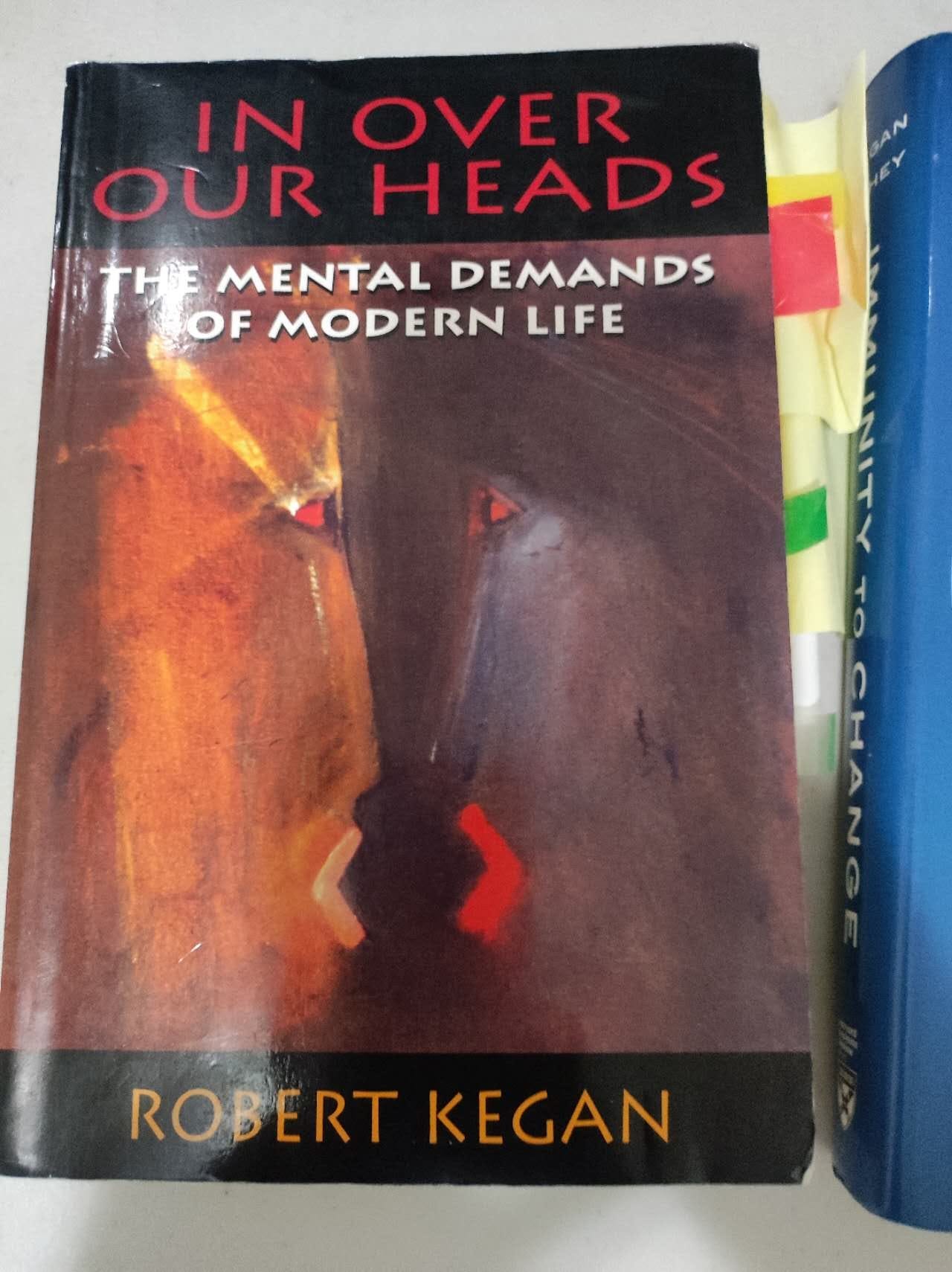
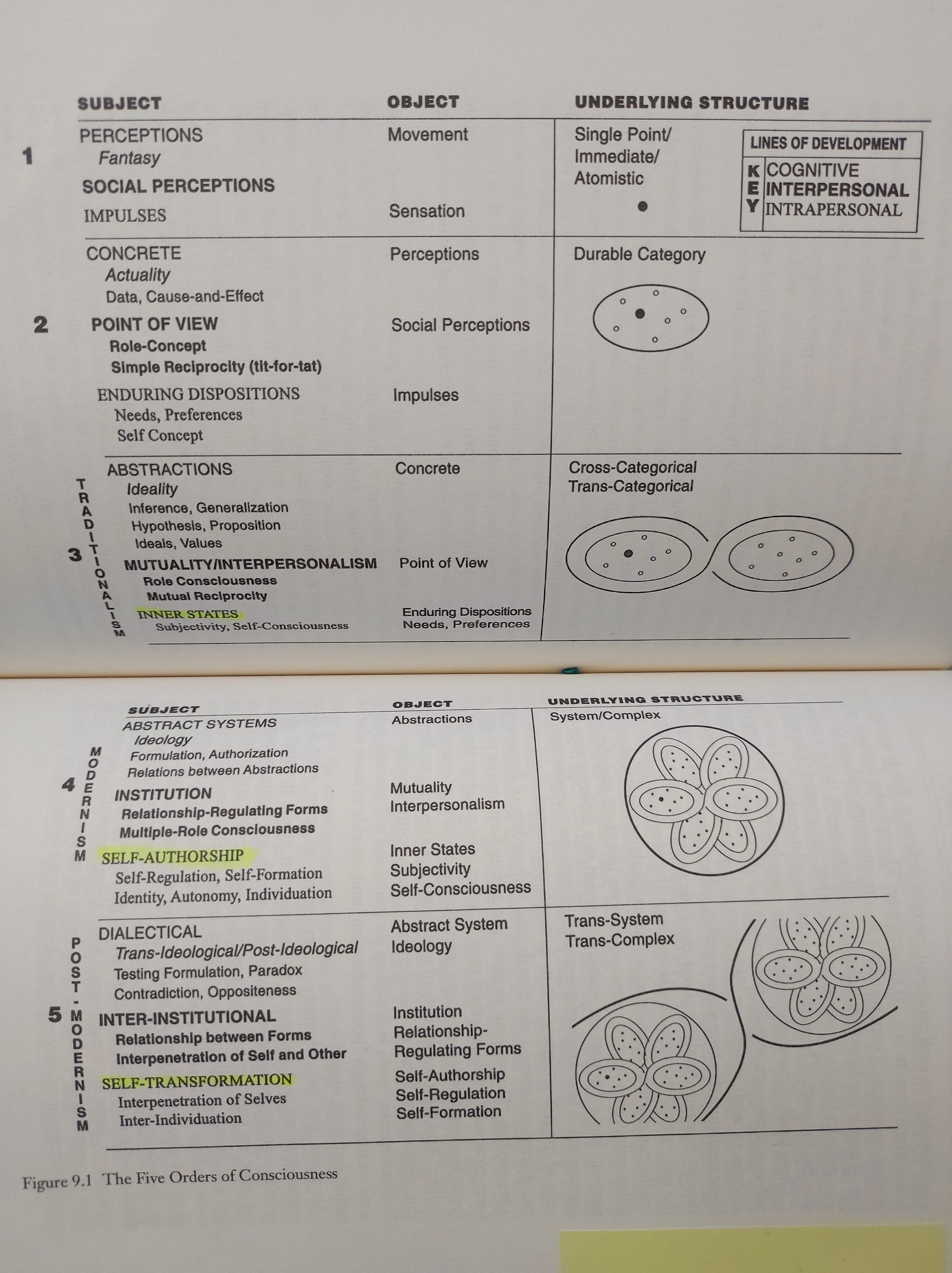
My understanding of the “Five Orders of Consciousness” framework is my O-knowledge.
Kegan’s Self — Object relationship can be seen as the Part — Whole relationship. If you see the row of Underlying Structure, you will find a pattern behind the five orders of consciousness.
- Single Point: The is a simple Whole which is the part. There is no distinction between the Whole and the Part.
- Durable Category: The Single Point becomes a Part of a Whole which refers to a Category. There is a distinction between the Whole and the Part.
- Cross-categorical/Trans-categorical: The Durable Category becomes a Part of a Whole which refers to two categories.
- System/Complex: There are more than two categories within the Whole.
- Trans-system/Trans-complex: There are two Systems within the Whole.
O-knowledge is about correctly understanding the content of a concept system such as an academic theory.
An academic/scientific theory is a high-level abstract knowledge system that contains a set of connected theoretical concepts and the complex relationship between these concepts. An established theory or theoretical tradition may have various applications at different levels of abstraction. A theory also has to establish its own identity by building its uniqueness that is different from other theories.
Thus, we have at least three ways to develop O-knowledge about a particular theory.
- Depth: The concept dynamics of a theory
- Width: The applicational practices of a theory
- Height: The uniqueness of a theory
The Depth way focuses on understanding the internal structure and complexity of a network of concepts of a theory. You can trace the historical development of each theoretical concept and the relationship between a theoretical concept and other concepts. For example, Clay Spinuzzi’s 2019 paper “Trying to predict the future”: third-generation activity theory’s codesign orientation is a good example of the Depth way.
The Height way is about comparing one theory with other similar theories in order to discover the uniqueness of a theory by identifying differences and similarities. You can compare several theories around a particular theme or compare two theories in multiple aspects. For example, Reijo Miettinen often writes papers comparing Activity Theory with other theories. His 2016 paper Four theories of networks: from interconnectedness to object-oriented collaboration focuses on the theme of networks. Reijo Miettinen also wrote papers about the relationship between Deweyan pragmatism and Cultural-historical activity theory in order to respond to Jim Garrison who is a philosopher and Dewey scholar.
The Width way aims to review various applications of a theory or a particular theoretical concept and present a landscape view of a knowledge enterprise. For example, In an analysis of the use of activity theory in HCI research, Bonnie Nardi (2016) and her colleagues collected 109 HCI activity theory papers and found scholars use five strategies in their research work to make use of activity theory: 1) an object of analysis, 2) a conceptual tool for design, 3) a meta-tool for developing new analytical tools, 4) a tool for conceptual analysis, and 5) a tool for empirical analysis.
We can apply the above one way or more ways to one project together. We can also use this 3D approach to watch the development of our thematic space about a particular theory.
You can find more details in The Knowledge Curation Toolkit #1: Theme U for Single-theory Curation and The Knowledge Curation Toolkit #5: WIDENESS for Multi-theory Curation.
M-knowledge
M-knowledge refers to knowledge about using tools and methods. For example, the skills of using some tools to build the house. For the present discussion, it means using a specific tool and a method to understand a concept system.
For example, I used the Knowledge Discovery Canvas to represent Kegan’s core ideas on a map. See the diagram below. My skills in using the canvas are my M-knowledge.
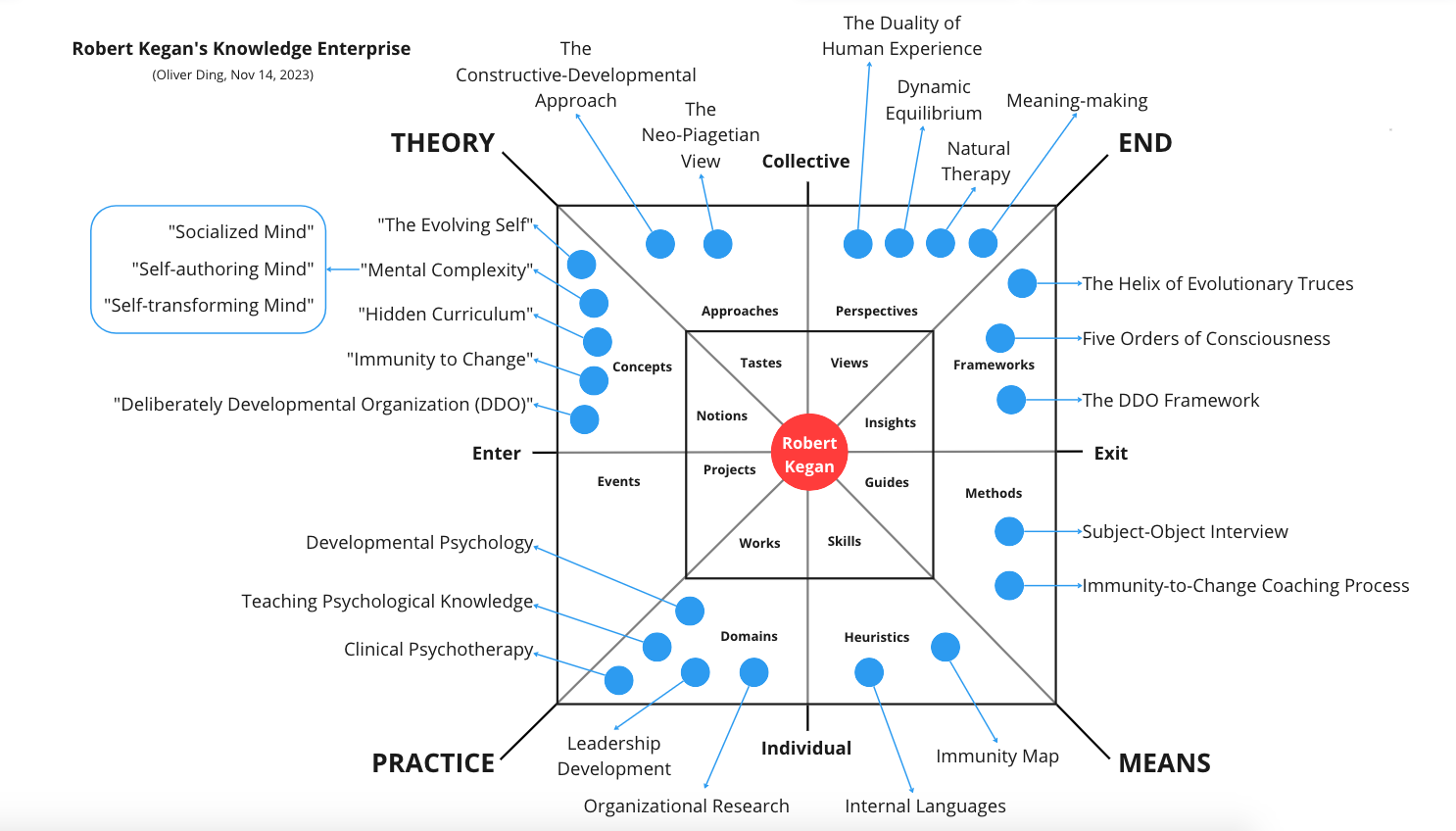
We can also use the Knowledge Discovery Canvas to guide the process of developing a concept system. The canvas below is an example.
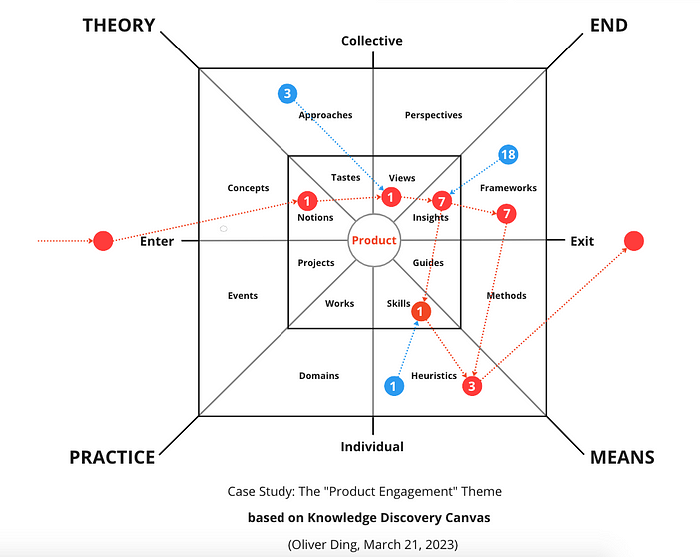
In Feb, I wrote a series of articles about Product-centered Business Development within two weeks. Business is a large field of social practice, I only focus on Product-centered Business Development activity. I used the Theory-based Reflection approach to adopt two theoretical approaches in order to develop a new Perspective called “Product Engagement”.
You can find more details in How did I develop the “Product Engagement” Framework?
T-knowledge
T-knowledge refers to knowledge about transforming O-knowledge to S-knowledge.
How to understand the T-knowledge?
Let’s see an example:
- O-knowledge: I wrote an article about Robert Kegan’s Knowledge Enterprise. My understanding of it is my O-knowledge.
- M-knowledge: I used the Knowledge Discovery Canvas to represent Kegan’s core ideas in a map. My skills in using the canvas are my M-knowledge.
- T-knowledge: I used Kegan’s “Five Orders of Consciousness” framework to reflect on my two knowledge projects: the development of Project Engagement approach and the development of Possible Life Theory (Creative Life Theory). This strategy is my T-knowledge.
- S-knowledge: Now I can use the “Five Orders of Consciousness” framework for my future projects.
On Nov 21, 2023, I realized that I could use the “Underlying Structure” to understand the evolving concept system.
How did I validate this idea?
I just did two case studies. The first case study was about the development of the Project Engagement Approach.
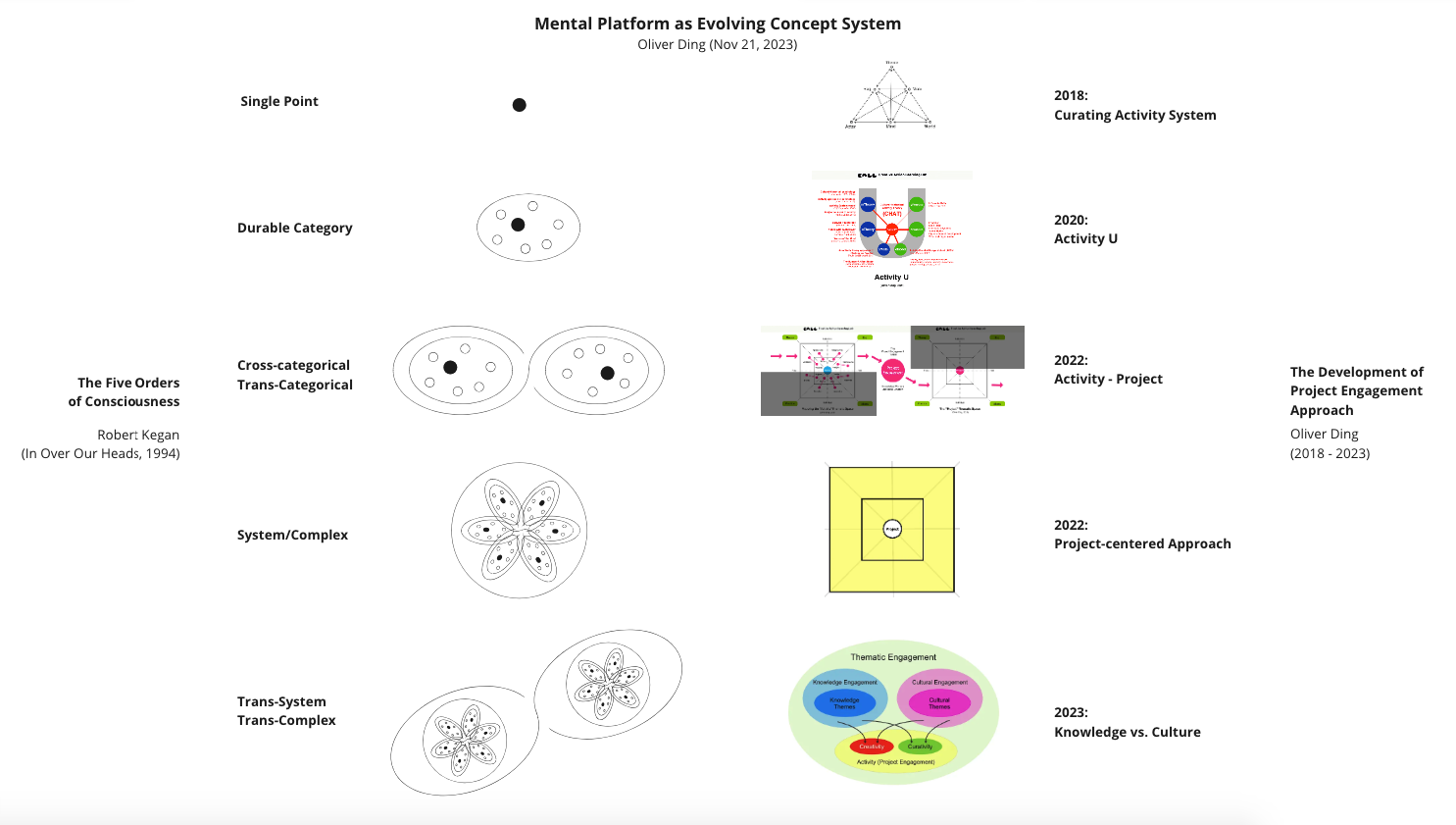
On Nov 22, 2023, I made the second case study which was about the development of Creative Life Theory (Possible Life Theory).
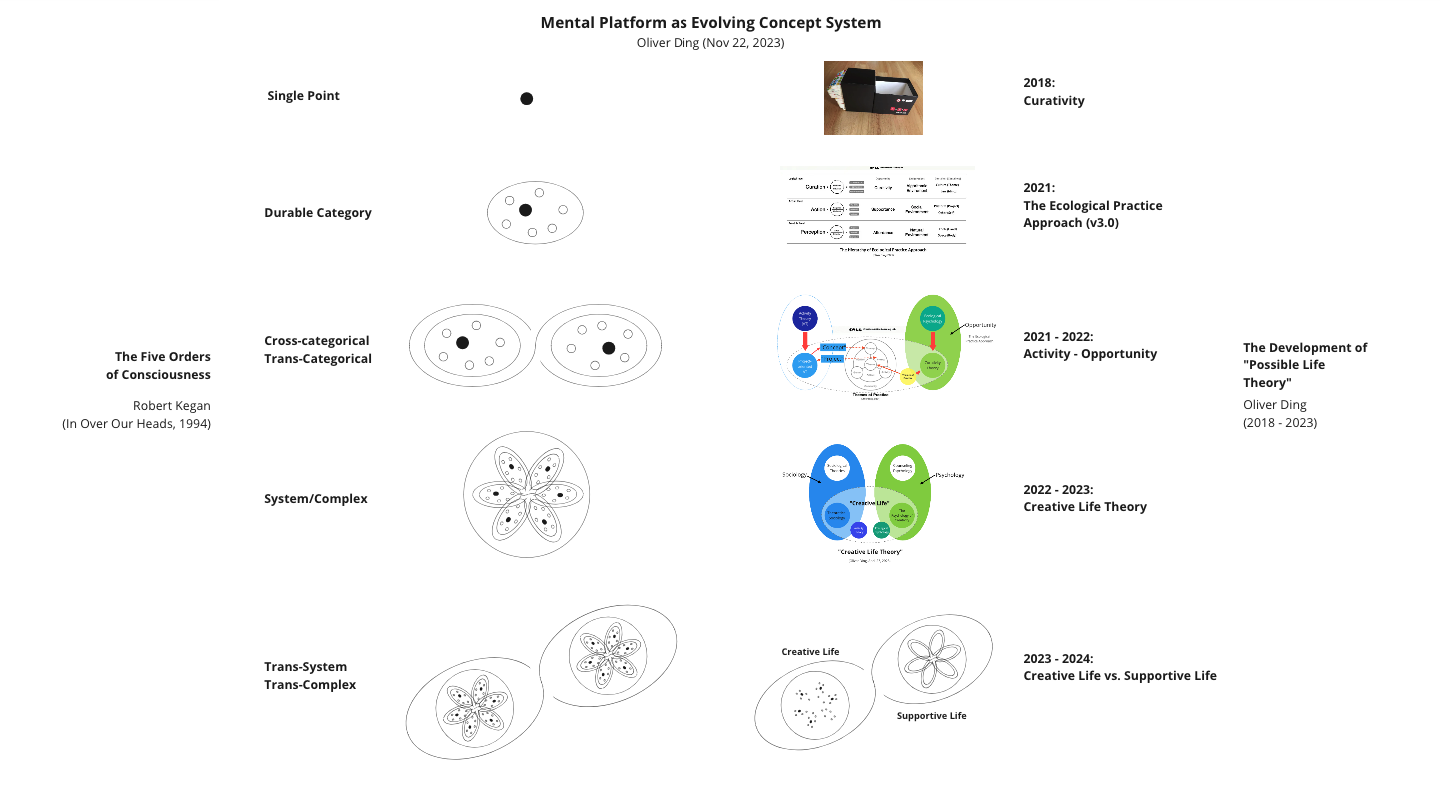
I found five movements in both two cases. These five movements match Kegan’s model.
This is fantastic!
Now I can use the “Five Orders of Consciousness” framework for my future projects.
The key to understanding T-knowledge is to switch Means and End.
Usually, we think about learning a theory as understanding its content. This is what O-knowledge is about. If I only write an article about Kegan’s framework, then the article is an End, my understanding of Kegan’s framework is an End too.
However, if we see a learned theory as a Means for our actions, then the O-knowledge becomes S-knowledge. I didn’t use other people’s frameworks to test Kegan’s framework. I used my own frameworks to test it. In this way, I gained a new insight into my own frameworks. I also claimed that Kegan’s framework is a useful model for future projects.
Kegan Robert’s model is not the only pattern of the evolution of concept systems. For example, I used the diagram below to represent the development of the “Anticipatory Activity System” framework. But, it is a new member of my S-knowledge.
